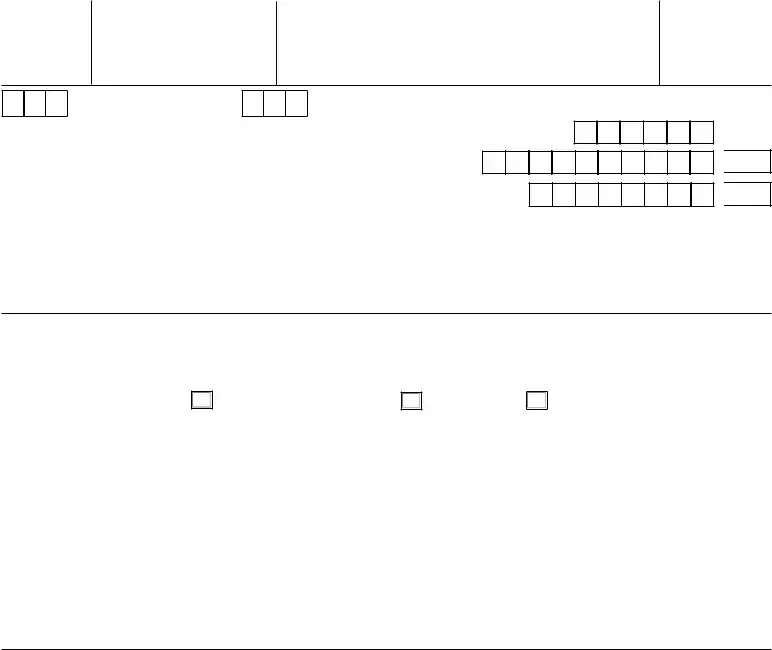The Federal Form W-3, "Transmittal of Wage and Tax Statements," bears similarity to the NJ W-3M, serving as a summary or reconciliation form that employers must file with the Social Security Administration (SSA) along with all W-2 forms for their employees. Both forms compile information on wages paid and taxes withheld from employees, although the W-3 is for federal reporting, whereas the NJ W-3M focuses on New Jersey state tax obligations. This distinction highlights how payroll reporting requirements must be met at both the federal and state levels, with each form playing a crucial role in the process.
Another relevant document is Form 940, "Employer's Annual Federal Unemployment (FUTA) Tax Return." Form 940 parallels the NJ W-3M in that it is an annual filing employers must complete, but it focuses on unemployment taxes rather than income taxes. While the NJ W-3M reconciles income taxes withheld from employees’ wages for New Jersey, Form 940 reconciles federal unemployment tax responsibilities. Each document ensures employers meet their respective tax reporting requirements for different types of taxes.
Form 941, "Employer's Quarterly Federal Tax Return," shares a purpose with the NJ W-3M, albeit on a federal level and on a quarterly basis. Form 941 is used by employers to report income taxes, social security tax, or Medicare tax withheld from employees' paychecks. Similarly to the NJ W-3M, which is used annually, Form 941 ensures the IRS is aware of the taxes withheld and paid on behalf of the employees, showing the regulatory parallels between state and federal tax obligations.
The W-2 form is an essential document closely associated with the NJ W-3M, providing detailed information on an employee's income, taxes withheld, and other deductions for the year. While the W-2 is prepared for each individual employee, the NJ W-3M serves as a collective summary of all W-2 forms issued by an employer within New Jersey. Basically, the W-2s provide the employee-specific information that fills the summary reported in the NJ-W3M, directly feeding into the reconciliation process required by the state.
State specific versions of the W-3 form, like the California Form DE-9C, "Quarterly Contribution Return and Report of Wages," perform a similar role to the NJ W-3M but cater to different state requirements. These forms serve as a reconciliation of wages and taxes paid within their respective states, showing how each state has its mechanisms for ensuring employers report and pay their tax dues properly. Though they vary in frequency and specific details required, the overarching goal mirrors that of the NJ W-3M.
The 1096 form, "Annual Summary and Transmittal of U.S. Information Returns," is akin to the NJ W-3M in its role as a summary document. While the 1096 is used to transmit Form 1099s and other types of information returns to the IRS, the NJ W-3M is specifically for reconciling gross income taxes withheld. Both serve as the final step in the reporting process, providing a comprehensive overview of the information being reported to the government.
Form 945, "Annual Return of Withheld Federal Income Tax," is designed for reporting federal income tax withheld from non-payroll items. It aligns with the NJ W-3M’s objective of tax reconciliation, but Form 945 encompasses areas like gambling winnings, pensions, and backup withholding on interest and dividends. This demonstrates how both forms cater to similar needs—ensuring taxes withheld are properly reported—albeit in different contexts.
The Schedule H form, associated with household employment taxes, shares a reconciliation function with the NJ W-3M. Schedule H is used by taxpayers to report taxes from household employees on their federal income tax returns. Like the NJ W-3M, it provides a summary of taxes due based on wages paid, highlighting the requirement across various employment types to accurately report and pay employment taxes.
The New York NYS-45, "Quarterly Combined Withholding, Wage Reporting, and Unemployment Insurance Return," is another parallel, catering to New York employers. It combines reporting for state income tax withholding, wage reporting, and unemployment insurance into one form, similarly to how the NJ W-3M handles income tax for New Jersey. This illustrates the variation in state reporting requirements, with each state streamlining its processes within a single or multiple forms.
Lastly, the Federal Form 1099 series, particularly Form 1099-MISC, reflects the broader concept of tax reporting captured by the NJ W-3M. Form 1099-MISC is used to report various types of income outside wages, salaries, and tips. While different in detail and purpose, both forms play crucial roles in the broader tax reporting and payment ecosystem, ensuring individuals and entities report income accurately to state and federal tax authorities.




